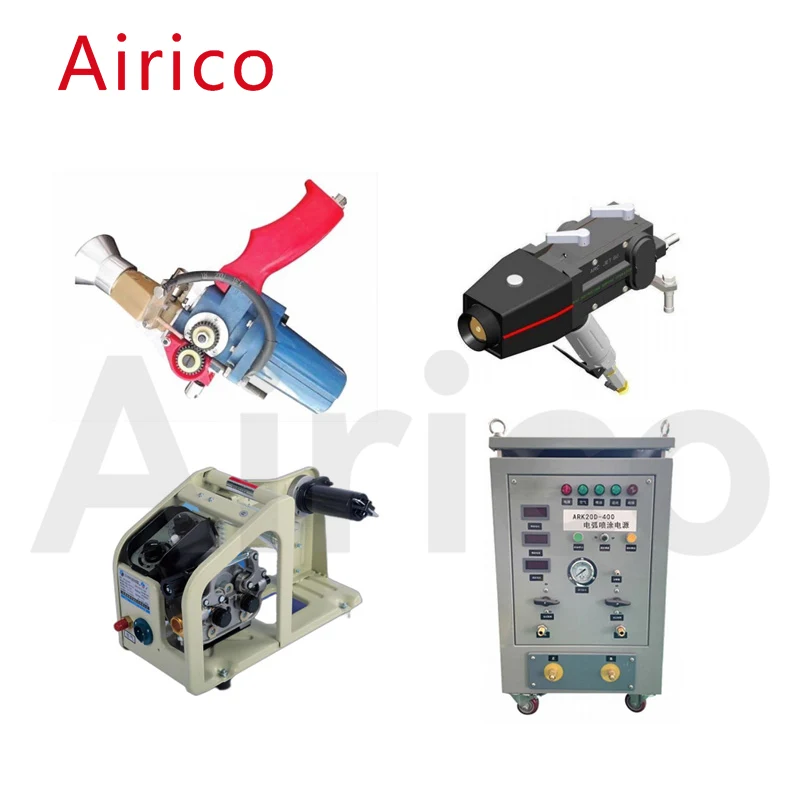Arc spraying, often referred to as metalizing, TSA, TSZ, and TWAS, is a highly productive and economical thermal spray coating system. This process utilizes direct current (DC) power to energize two conductive wires, one positive and the other negative, which are then fed through a feeder into a gun head. Arc spraying is widely used in various industries for surface coating, corrosion protection, and the restoration of worn or damaged surfaces.

The arc spraying process begins with the preparation of the two conductive wires. These wires are typically made of metals such as zinc, aluminum, or steel, and they are fed into the arc spray gun through a feeder mechanism. The gun head contains a nozzle that directs a high-velocity stream of compressed air onto the wires as they are energized.
When the two wires come into contact with each other, an arc is created between them. This arc generates a significant amount of heat, which melts the ends of the wires. The melted metal is then atomized into fine droplets by the high-velocity air stream and sprayed onto the surface to be coated.
The arc spraying process is highly automated, allowing for precise control over the coating thickness, uniformity, and porosity. The coating material can be applied in layers to achieve the desired thickness and properties.
Arc spraying is used in a wide range of applications, including:
Corrosion Protection: Arc sprayed coatings provide excellent corrosion resistance, making them ideal for protecting metal surfaces in harsh environments. These coatings can be applied to bridges, highway structures, oil and gas pipelines, and other infrastructure.
Wear Resistance: Arc sprayed coatings can be formulated to provide high wear resistance, making them suitable for applications such as machine parts, tools, and equipment that are subject to friction and abrasion.
Restoration: Arc spraying can be used to restore worn or damaged surfaces, such as those found on equipment, machinery, and vehicles. The coating material can be matched to the substrate material to ensure a strong bond and durable finish.
Aesthetic Finishes: Arc sprayed coatings can also be used to create decorative and aesthetic finishes on a variety of surfaces, including architectural elements, automotive parts, and consumer products.
The arc spraying process offers several benefits, including:
High Deposition Rates: Arc spraying can achieve high deposition rates, allowing for quick and efficient coating of large surfaces.
Cost-Effectiveness: Arc spraying is a cost-effective coating method, as it requires minimal material waste and can be performed using relatively inexpensive equipment.
Versatility: Arc spraying can be used to apply a wide range of coating materials, including metals, alloys, ceramics, and composites.
Durability: Arc sprayed coatings are highly durable and can withstand exposure to extreme temperatures, chemicals, and mechanical stress.
Environmental Impact: Arc spraying is a relatively environmentally friendly process, as it generates minimal waste and emissions compared to other coating methods.

